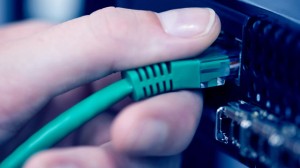
Amidst all the exciting discussions of how to deepen student learning with digital and online tools is a much less exciting, but equally important question about how to schools pay for the expensive infrastructure like bandwidth, wireless networks, and basic internet connections central to new teaching methods. The federal government recognized this need in 1996 when the internet was in its infancy, creating the Universal Service Program for Schools and Libraries, or E-rate, to help schools and libraries connect to the internet. The program funds the connectivity needs of the majority of public schools and libraries.
Now, the Federal Communications Commission is working to rewrite the E-rate program guidelines to better suit the emerging needs of today’s school environment. The changes are welcome news to harried school technology experts tasked with estimating a school’s needs more than a year in advance and applying for federal funds through the cumbersome E-rate application process.
In 2013, the program had $2.4 billion dollars to give out and received requests totaling $4.9 billion. “Demand has exceeded the E-rate cap every year since the program's inception,” notes the FCC’s website on E-rate basics.
Given the success of the E-rate program in getting internet connections to schools around the country and the increasing need for technology in classrooms, many educators would like to see the program funded at higher levels. “It is simply insufficient to meet school and library demands 15 years later,” Calcasieu Parish Chief Technology Officer Sheryl Abshire told a Senate committee recently. “In my opinion we need a permanent increase in funding.” Despite these calls, the first draft of the new regulations does not indicate there will be more funds.
[RELATED: Internet Access for All: A New Program Targets Low-Income Students]
Instead, the FCC has started by focusing on streamlining the existing program to better use currently available funds. “There’s a real recognition that using the current pricing models, it’s very difficult to achieve the President’s goals of getting all these students connected at the speeds they want,” said John Harrington, CEO of Funds for Learning, an e-rate consulting company. His business helps school districts wade through the paperwork and reporting requirements for e-rate applications. “It’s very frustrating to watch schools get funded for only half a project,” he said when describing his wish to see the program improved.

